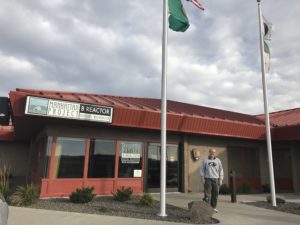 Tom and I had one final National Park site in Washington to see before we left the state. Of all the sites we visited, Tom was most looking forward to this one. The Manhattan Project ushered the United States into the nuclear age. Through the intense work of scientists and engineers at many different sites in the United States, the country developed our first atom bombs. Three of these sites are preserved to tell the story: Hanford, Oak Ridge, and Los Alamos.
Tom and I had one final National Park site in Washington to see before we left the state. Of all the sites we visited, Tom was most looking forward to this one. The Manhattan Project ushered the United States into the nuclear age. Through the intense work of scientists and engineers at many different sites in the United States, the country developed our first atom bombs. Three of these sites are preserved to tell the story: Hanford, Oak Ridge, and Los Alamos.
At the Hanford Site of the Manhattan Project, engineers worked feverishly to build the world’s first nuclear reactor. The huge reactor produced plutonium to be used in the atom bombs. More than 51,000 workers at Hanford constructed and operated a massive industrial complex. The workers fabricated, tested, and irradiated uranium fuel and chemically separated out plutonium. The Hanford landscape is also representative of one of the first acts of the Manhattan Project: the condemnation of private property and eviction of landowners to clear the way for the top-secret work.
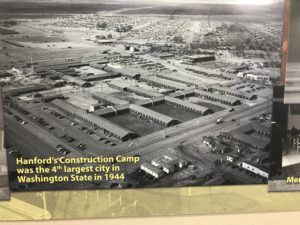 The Manhattan Project Hanford Site is a partnership between the National Park Service and the Department of Energy. In order to tour the Hanford site you have to sign up for a free four-hour tour. Tom was eager to go, but concerned that I would be bored with a tour that long. I assured him I would be fine, so we signed up for the 10:30 tour.
The Manhattan Project Hanford Site is a partnership between the National Park Service and the Department of Energy. In order to tour the Hanford site you have to sign up for a free four-hour tour. Tom was eager to go, but concerned that I would be bored with a tour that long. I assured him I would be fine, so we signed up for the 10:30 tour.
We almost drove past the Hanford Site Visitors Center. I was looking for the familiar brown shield and the Visitors Center does not display one. Instead, the Visitors Center is an office building that looks like a place you would go to pay your utility bill. We signed in for our tour and looked at the displays in the small museum.
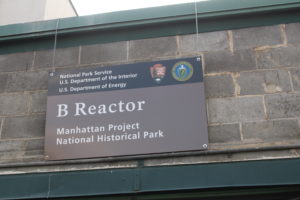 The tour started promptly at 10:30 with a short talk by an engineer who retired from the Hanford site (the reactors were closed in 1987). Then we watched a movie on the development of the atomic bomb. About 11:15 we climbed on a small bus and rode the hour to the remote site.
The tour started promptly at 10:30 with a short talk by an engineer who retired from the Hanford site (the reactors were closed in 1987). Then we watched a movie on the development of the atomic bomb. About 11:15 we climbed on a small bus and rode the hour to the remote site.
When this site was selected for the Manhattan Project, the Dupont contractors has some specific requirements. They needed a large and remote tract of land, a “hazardous manufacturing area” of at least 12 by 16 miles, and space for laboratory facilities at least 8 miles from the nearest reactor. In addition, they needed a clean and abundant water supply, a large electrical power supply, and ground that could bear heavy loads. The Hanford site was ideal, but there were two towns and a lot of agricultural land in the area. The federal government quickly acquired the land under its war powers authority and relocated 1,500 residents. Today this huge 600 square mile area is surrounded by fences and patrolled regularly.
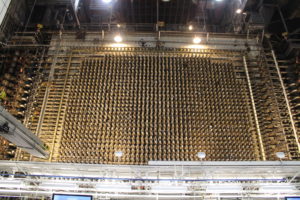 You really have to see the B-Reactor in order to appreciate how quickly this huge and impressive nuclear reactor was built. We walked into the B-Reactor building and were immediately met by a huge wall of 4,000 uranium production rods. Each rod is individually encased to produce atoms. Each rod also has its own cooling system. We sat on benches and listened to a talk by another retired Hanford engineer who explained how it all worked. It was fascinating. I’m not going to go into all the details. You can read a pretty good explanation of it here if you are interested. The most impressive part to me was going from experimental nuclear reactions to full-scale production in less than two years. It is amazing they didn’t blow themselves up!
You really have to see the B-Reactor in order to appreciate how quickly this huge and impressive nuclear reactor was built. We walked into the B-Reactor building and were immediately met by a huge wall of 4,000 uranium production rods. Each rod is individually encased to produce atoms. Each rod also has its own cooling system. We sat on benches and listened to a talk by another retired Hanford engineer who explained how it all worked. It was fascinating. I’m not going to go into all the details. You can read a pretty good explanation of it here if you are interested. The most impressive part to me was going from experimental nuclear reactions to full-scale production in less than two years. It is amazing they didn’t blow themselves up!
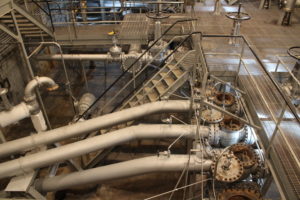 We walked around the B-Reactor for a while. We listened to another talk in the Valve Room and one in the Control Room. Dupont built the facility and designed every system with three fail-safes. If one safety method failed, there were still two back-ups.
We walked around the B-Reactor for a while. We listened to another talk in the Valve Room and one in the Control Room. Dupont built the facility and designed every system with three fail-safes. If one safety method failed, there were still two back-ups.
Today the Hanford site is the most contaminated nuclear site in the United States and is the focus of the nation’s largest environmental cleanup. A tunnel collapse in May 2017 endangered the storage of 53,000,000 gallons of high-level radioactive waste stored in 177 underground tanks. About a third of these tanks are known to be leaking radioactive waste into the soil and groundwater. Obviously this is a big concern to the people of eastern Washington and Oregon. We weren’t worried about personal contamination because we were there for a very short time. And our tour guides wore radiation badges.
Visiting the Hanford site of the Manhattan Project National Historical Site was fascinating. The enormous scale of the project proves what we, as a nation, can do when we are focused on a single purpose. We appreciated seeing this historically important site up close.


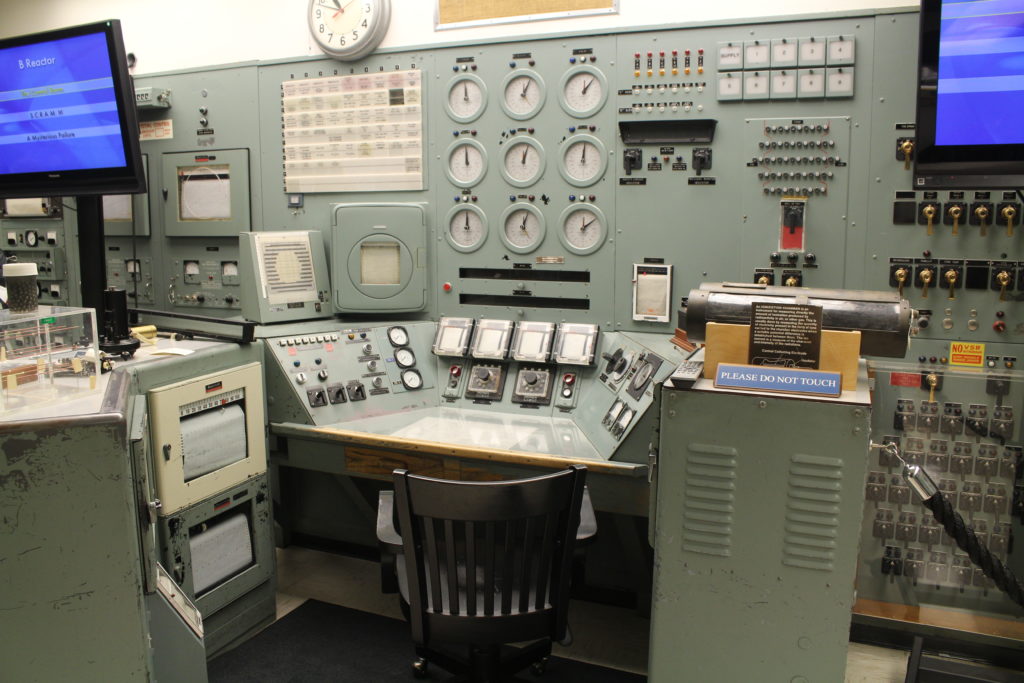
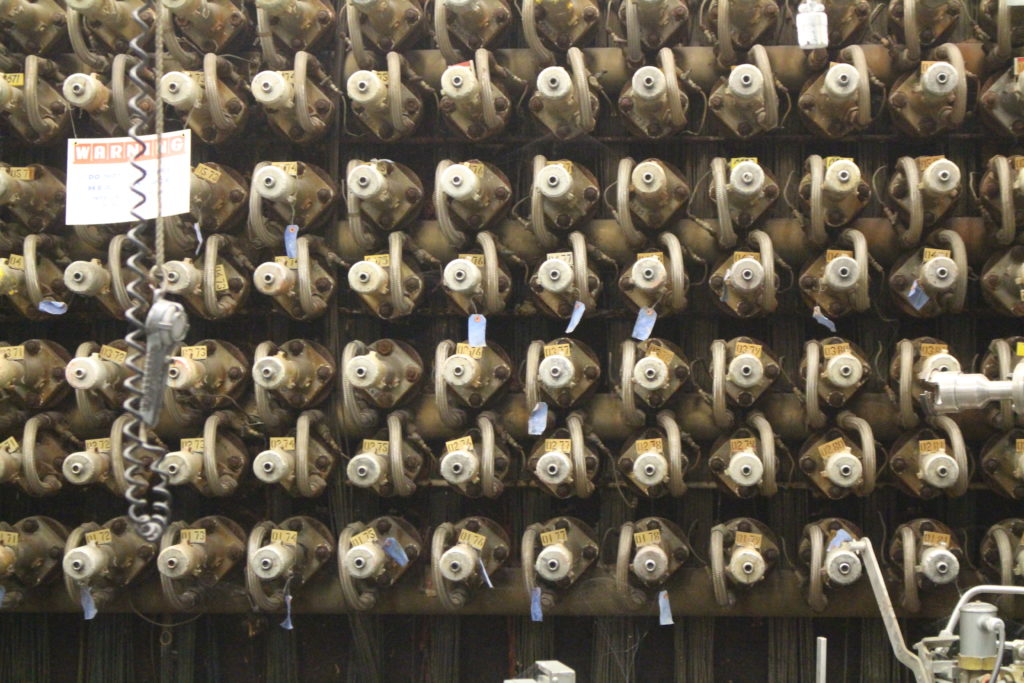
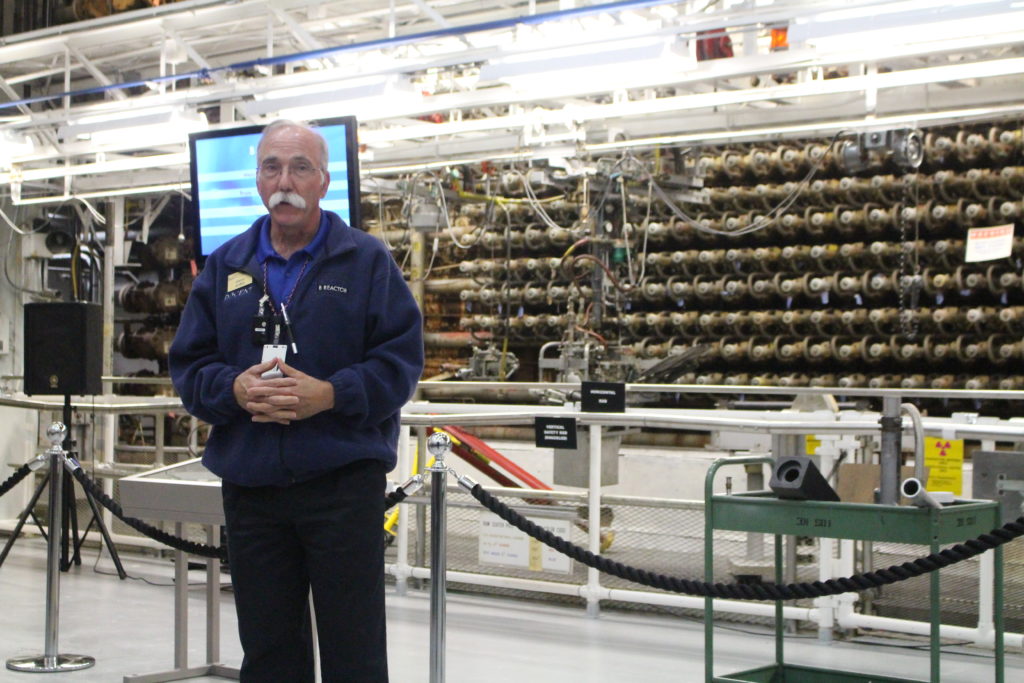
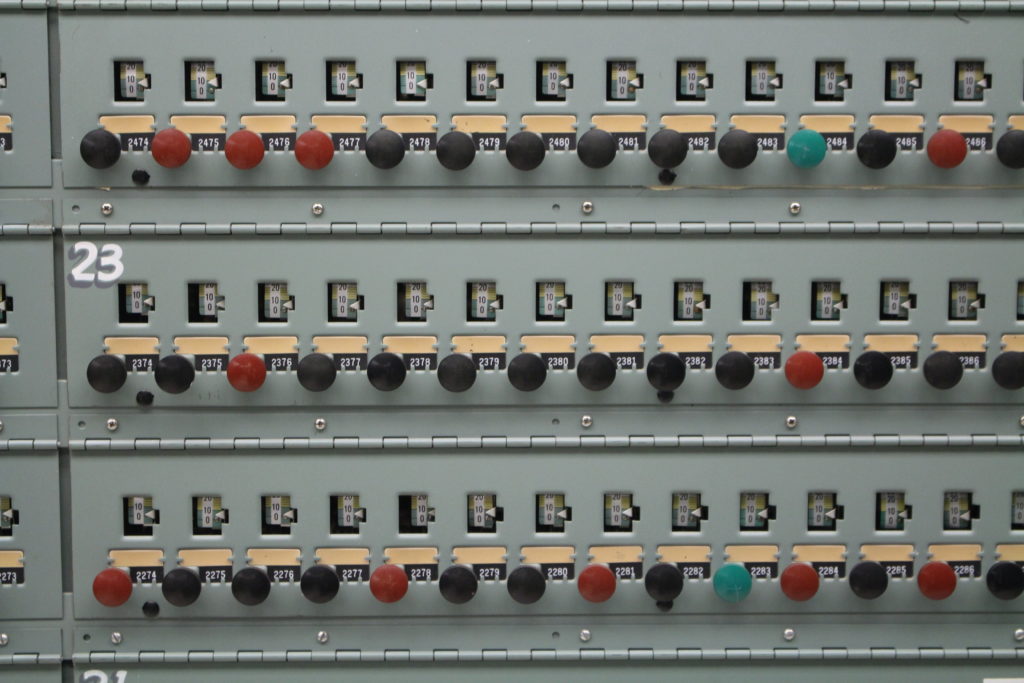
2 comments